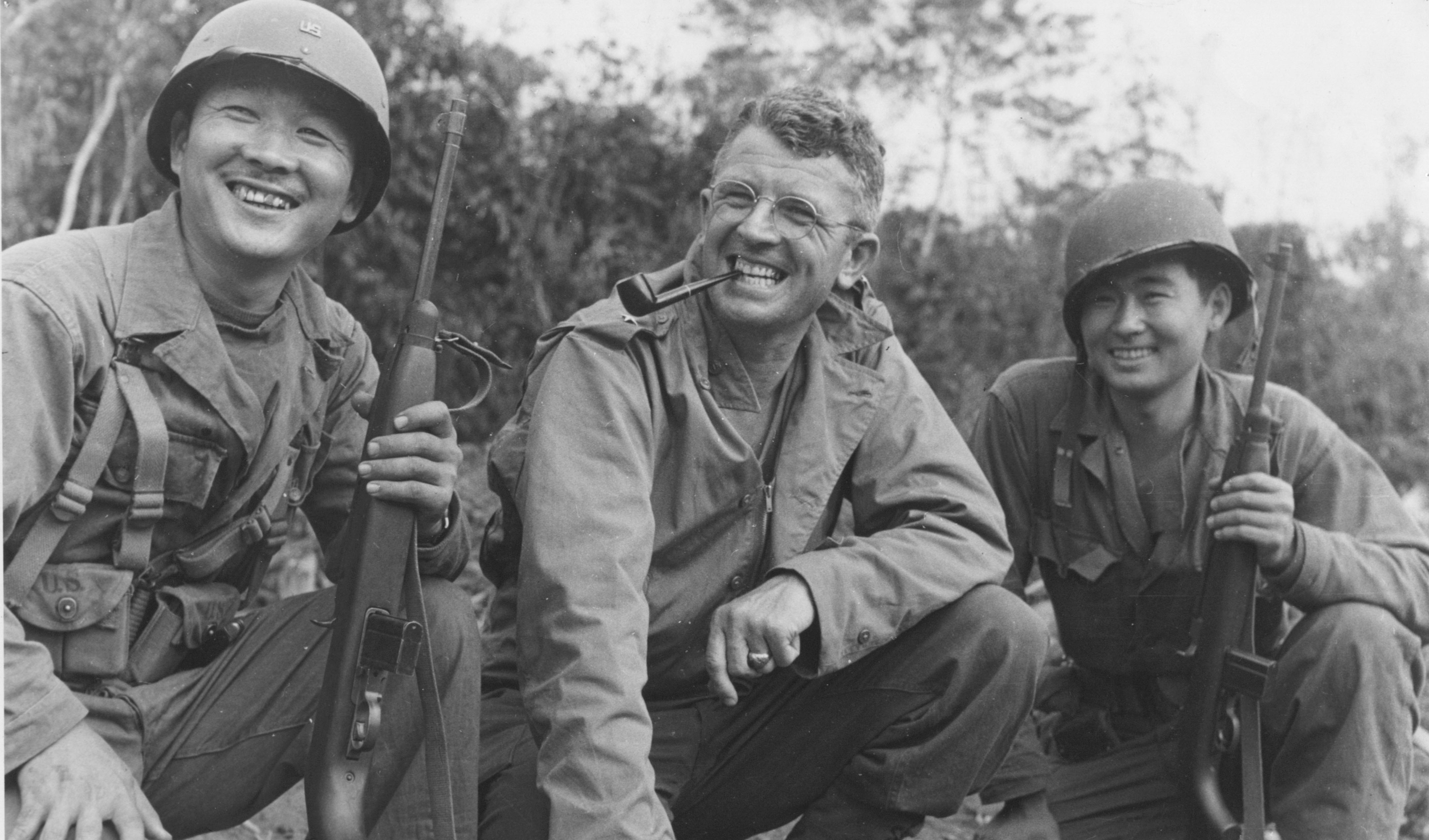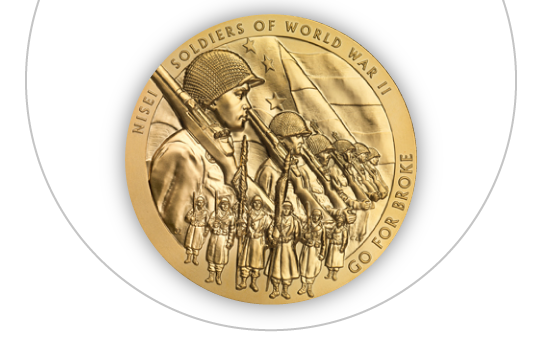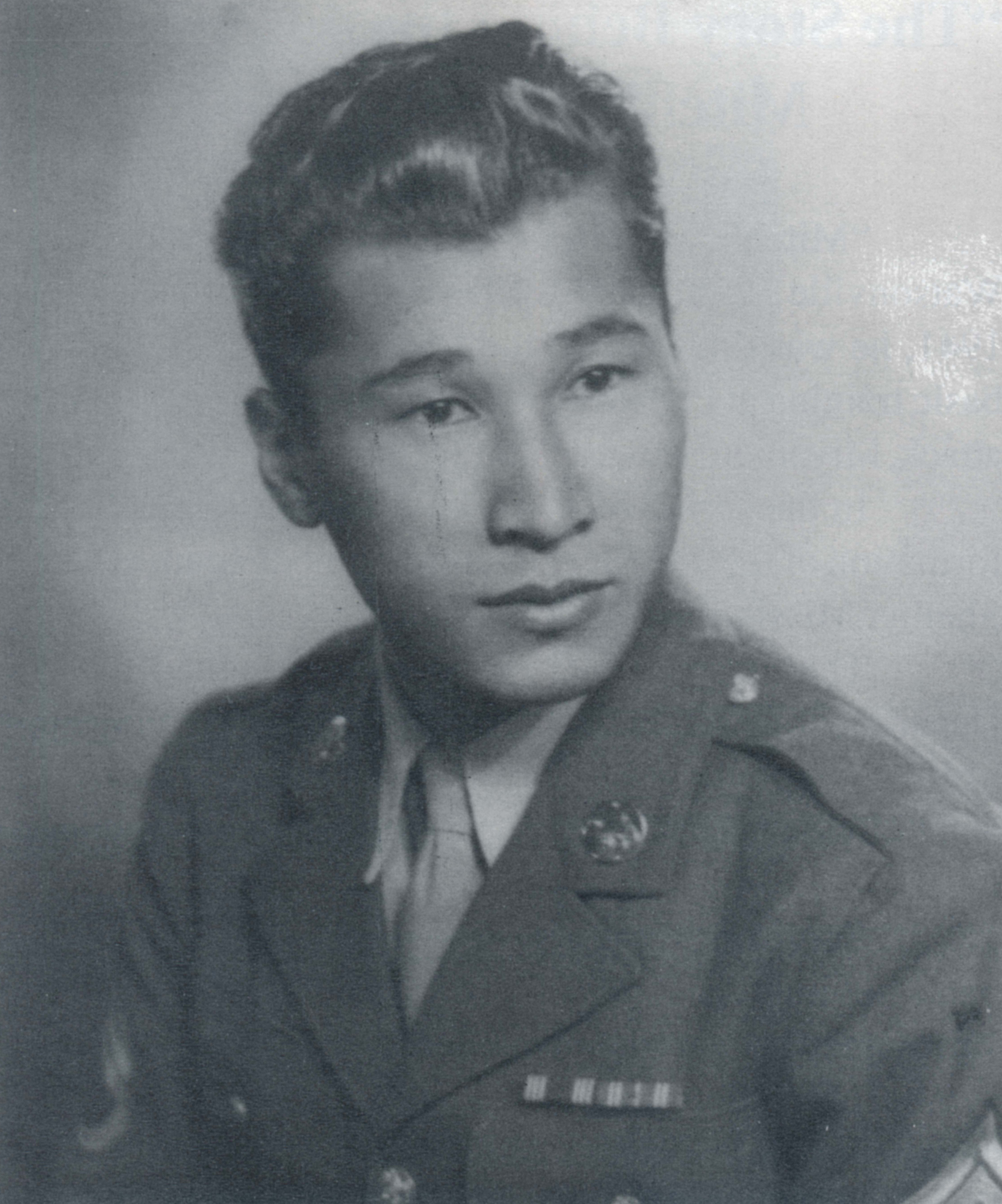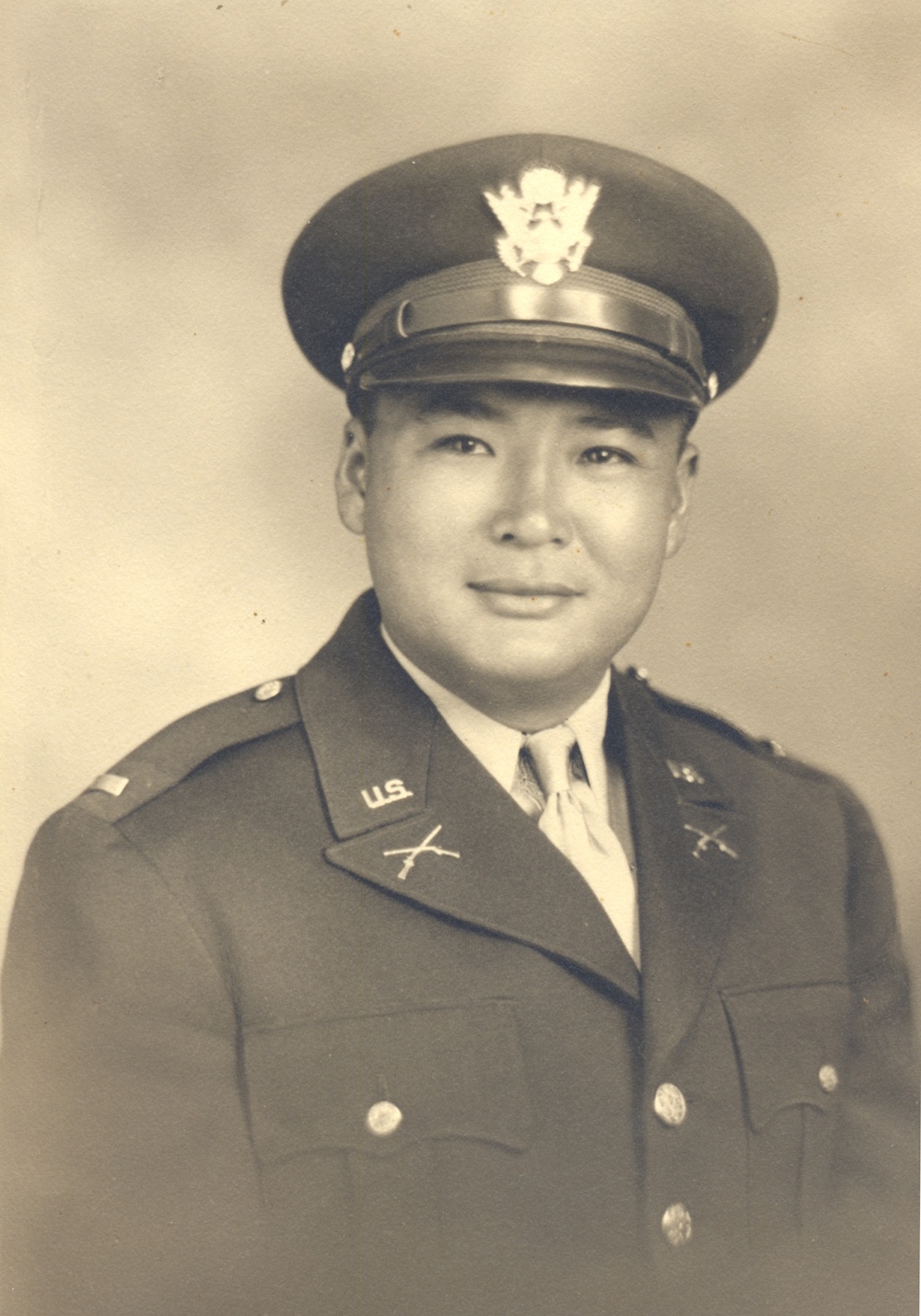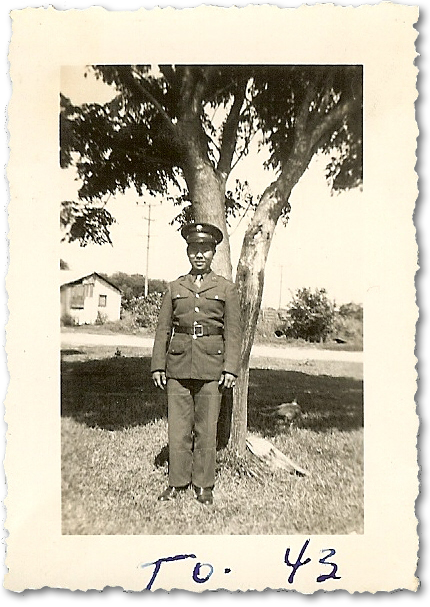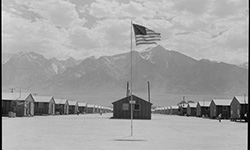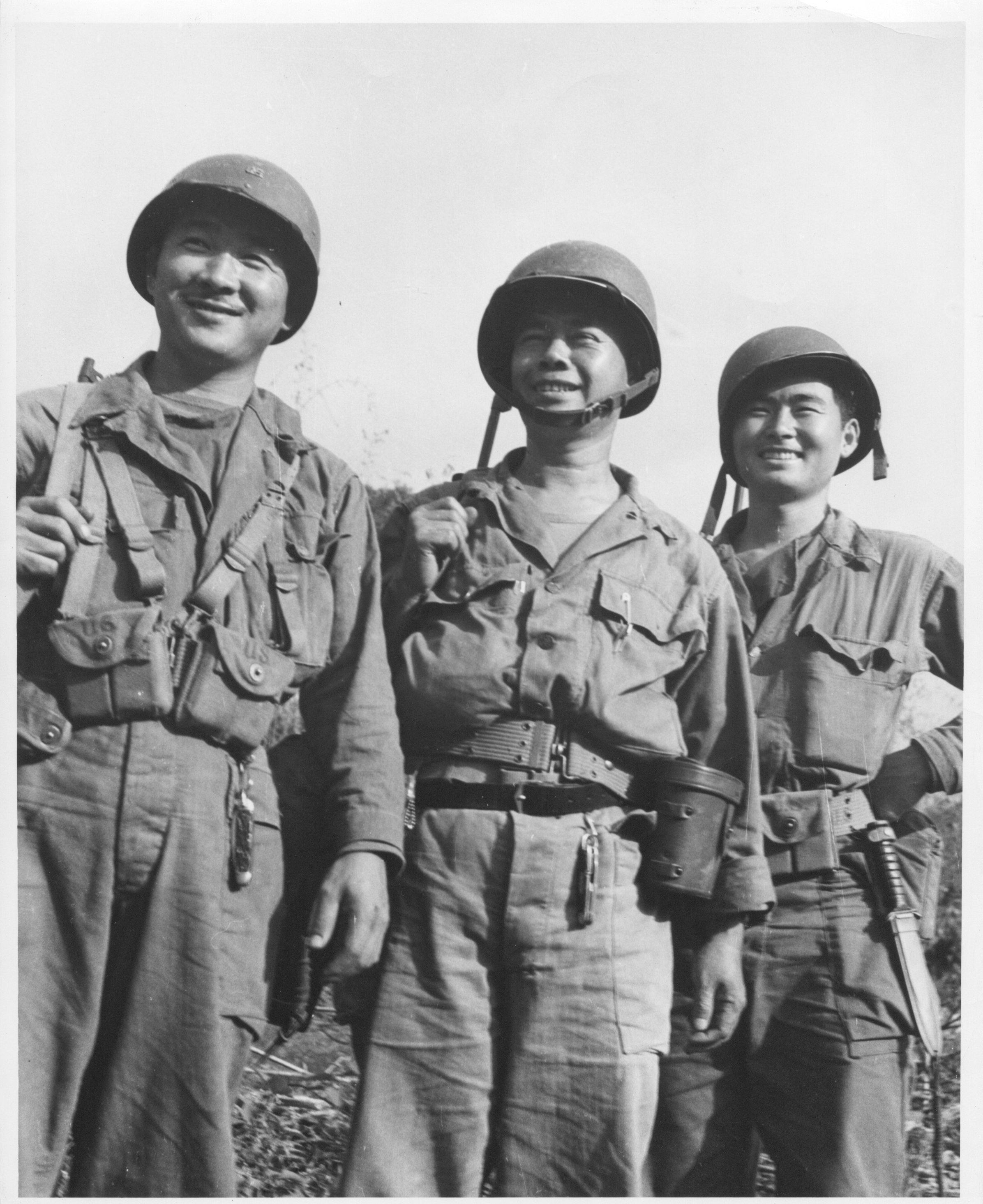
MIS interpreters with Merrill Marauders, Northern Burma, May 1, 1944
Legacy of Loyalty
The 100th Infantry Battalion/442nd Regimental Combat Team was a segregated military unit which fought in the European campaign during World War II. The Military Intelligence Service consisted of Japanese American linguists that served in the Pacific campaign and the Occupation of Japan. All 18,000 soldiers were recognized for their bravery, valor, and loyalty to their beloved country, the United States of America.
Learn more about their extraordinary service.
Military Intelligence Service: Tom Sakamoto
Months before the bombing of Pearl Harbor, Tom was drafted into the US Army. Because he had spent several years in Japan and could speak Japanese, he was recruited to join the MIS Language School at the Presidio in San Francisco.
I joined the class of 60, all Nisei except for two Caucasians. Only 35 of us graduated. I was sent to Camp Savage, Minnesota, to a broken down men’s homeless shelter as a language instructor.|Tom Sakamoto
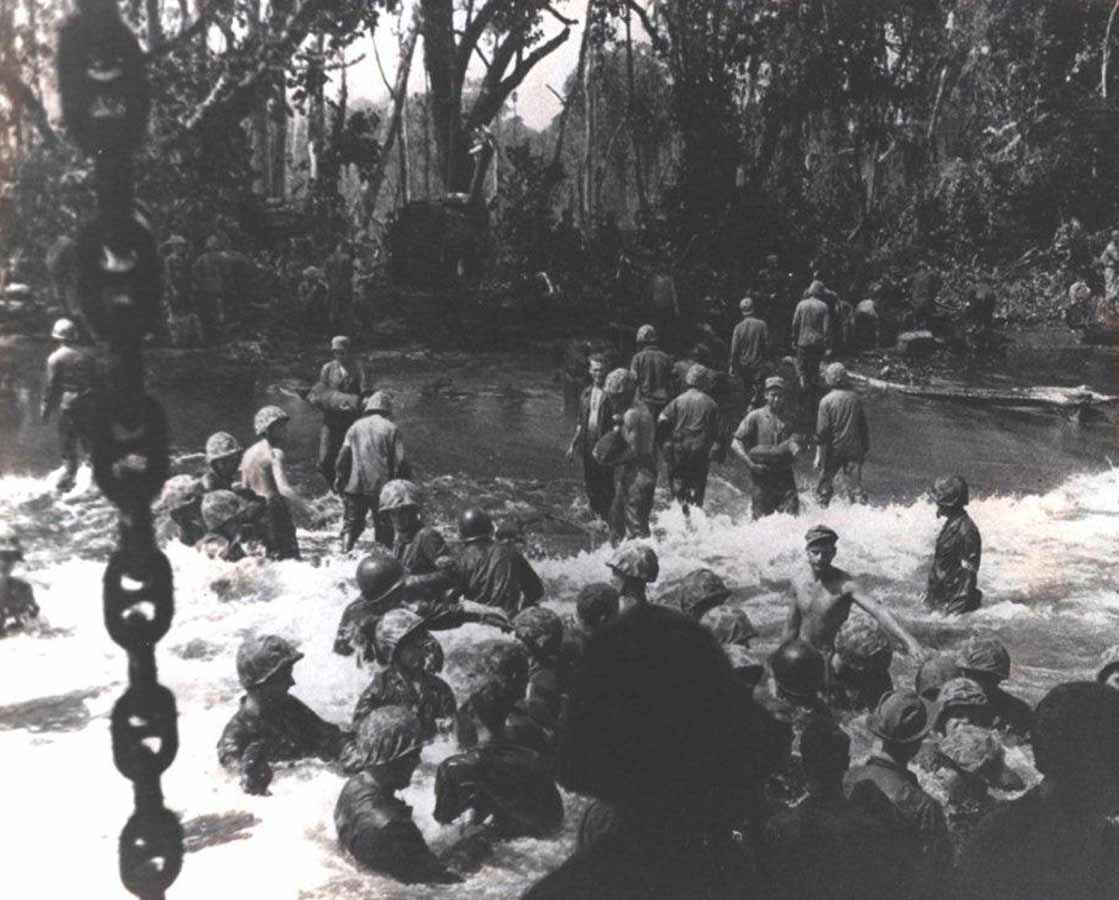
1st Cavalry Division troops climb ashore during a Pacific island landing during World War II.
Tom wanted to serve overseas and volunteered to go to Los Negros Island near Australia. While attached to a task force under General Douglas MacArthur, he translated documents that led to the capture of a naval base from the Japanese. This action earned him the first of his two Bronze Stars.
He saved the lives of countless American soldiers by interpreting enemy communication, including information about a “banzai attack” that was on its way within 24 hours.
At the end of the war, Tom served as a press escort to American journalists covering the surrender of Japan on the USS Missouri. He witnessed firsthand the Japanese delegation’s signing of the document of surrender.
Tom was inducted in the Defense Language Institute’s Hall of Fame in November 2007.
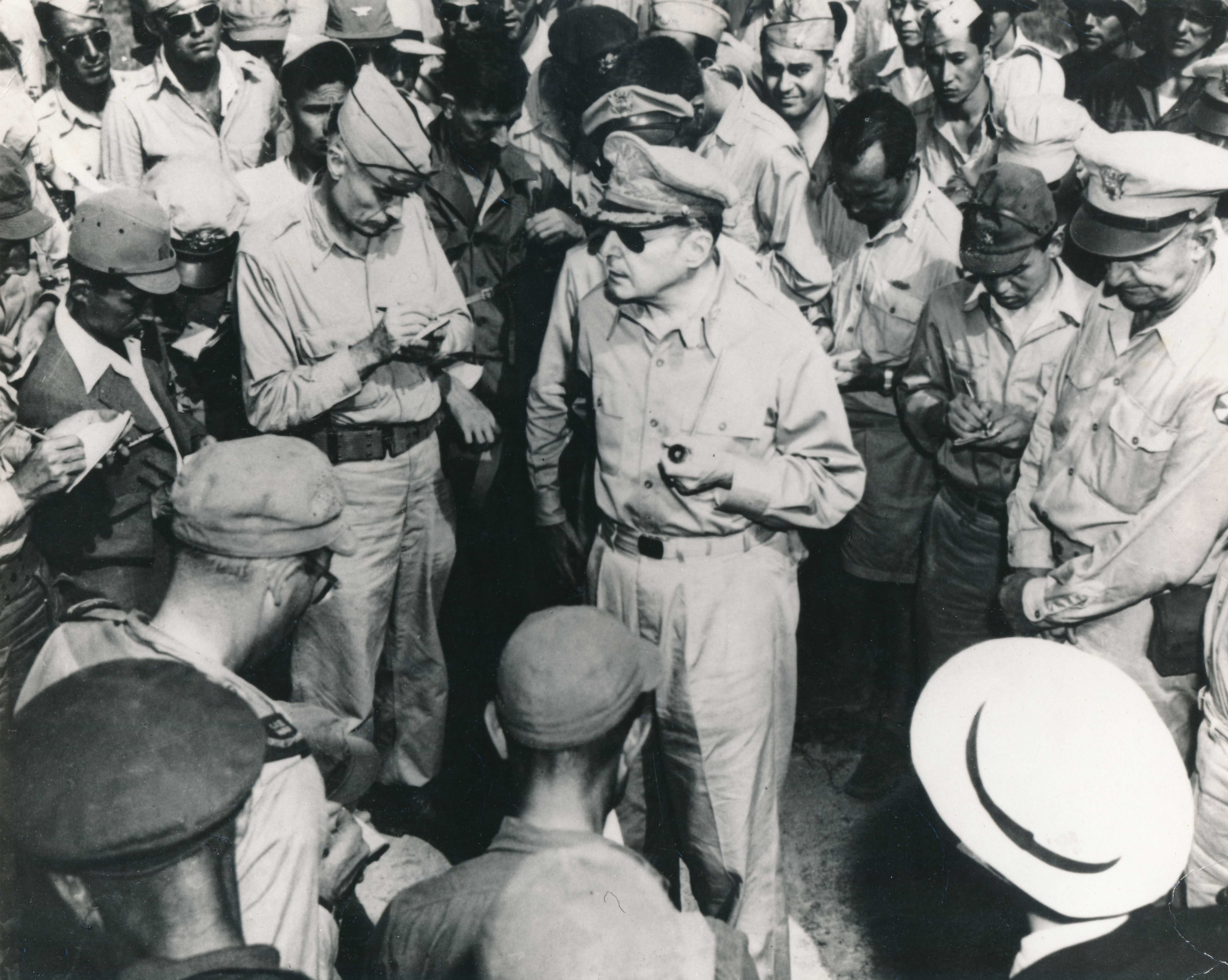
Tom Sakamoto with Gen. Douglas MacArthur at Atsugi Air Field, 1945
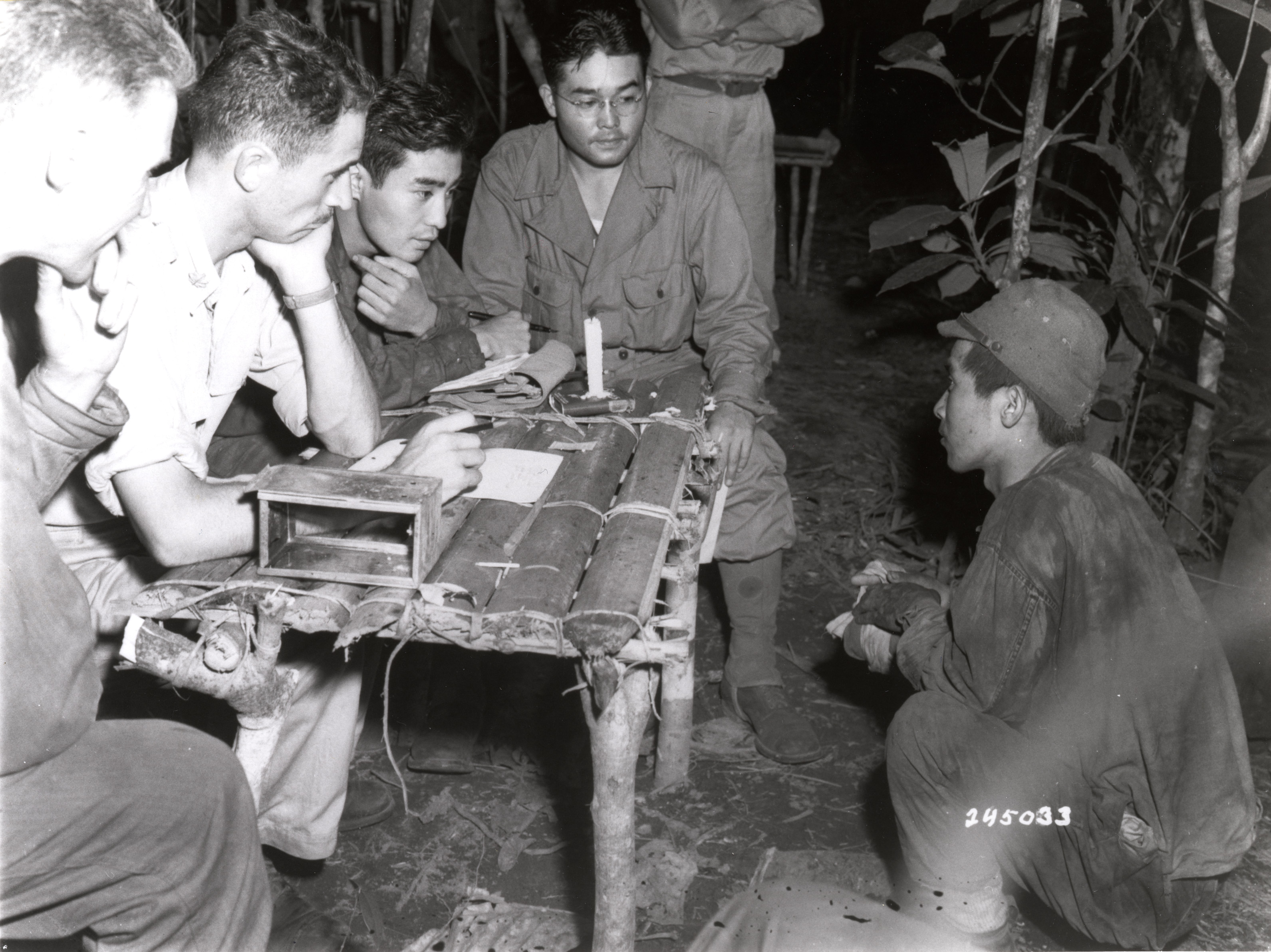
Nisei linguist interrogating Japanese Prisoners of War
Legacy of Military Intelligence Service
Later referred to as America’s “secret weapon,” the MIS graduates were dispatched to every combat theater and participated in every major battle and invasion against the Japanese military.
As order-of-battle specialists, the Nisei linguists intercepted and deciphered enemy communications, translated documents, and interrogated Japanese prisoners of war. Prior to World War II, Nisei serving in the Counter Intelligence Corps went undercover in Japan-occupied Manila. Nisei linguists were also able to hasten the surrender of the enemy by broadcast appeals and other psychological warfare tactics.
When the Pacific war ended, the MIS used their Japanese language skills to rebuild Japan and laid the groundwork for Japan’s democracy. Japan has since become a strong US ally.
The Nisei linguists are credited with saving a million lives.
In 2000, the MIS earned their Presidential Unit Citation for extraordinary heroism in military operations against an armed enemy.
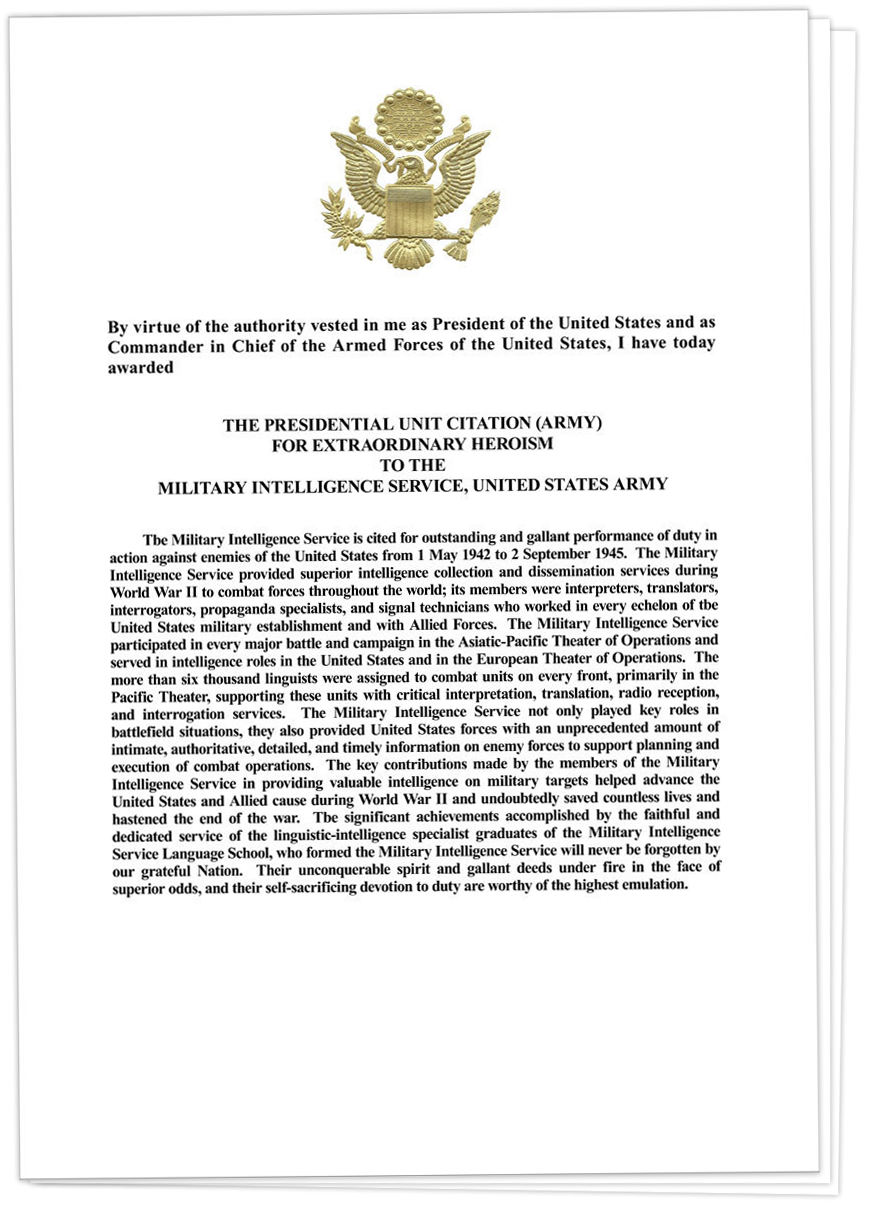
Presidential Unit Citation awarded to the MIS in 2000
100th Infantry Battalion: Jack Mizuha
Unlike many Nisei, Jack Mizuha always spoke what was on his mind and in his heart. His words would eventually reach the White House.
Jack commanded Company M, 299th Infantry Regiment, Hawaii National Guard, from 1935 to December 7, 1941, when Pearl Harbor was attacked. He then led Company D, 100th Infantry Battalion, in combat as commander.
During a battle near Cassino in Italy, Jack was shot. The bullet entered his back, narrowly missing his spine and lungs. He survived the infection from the wound, but was left with a scar and pain that plagued him the rest of his life.
As he was recovering from his injury, he wrote letters on
behalf of his fellow soldiers. He wrote to friends and politicians, telling of
the sacrifices made by his comrades.
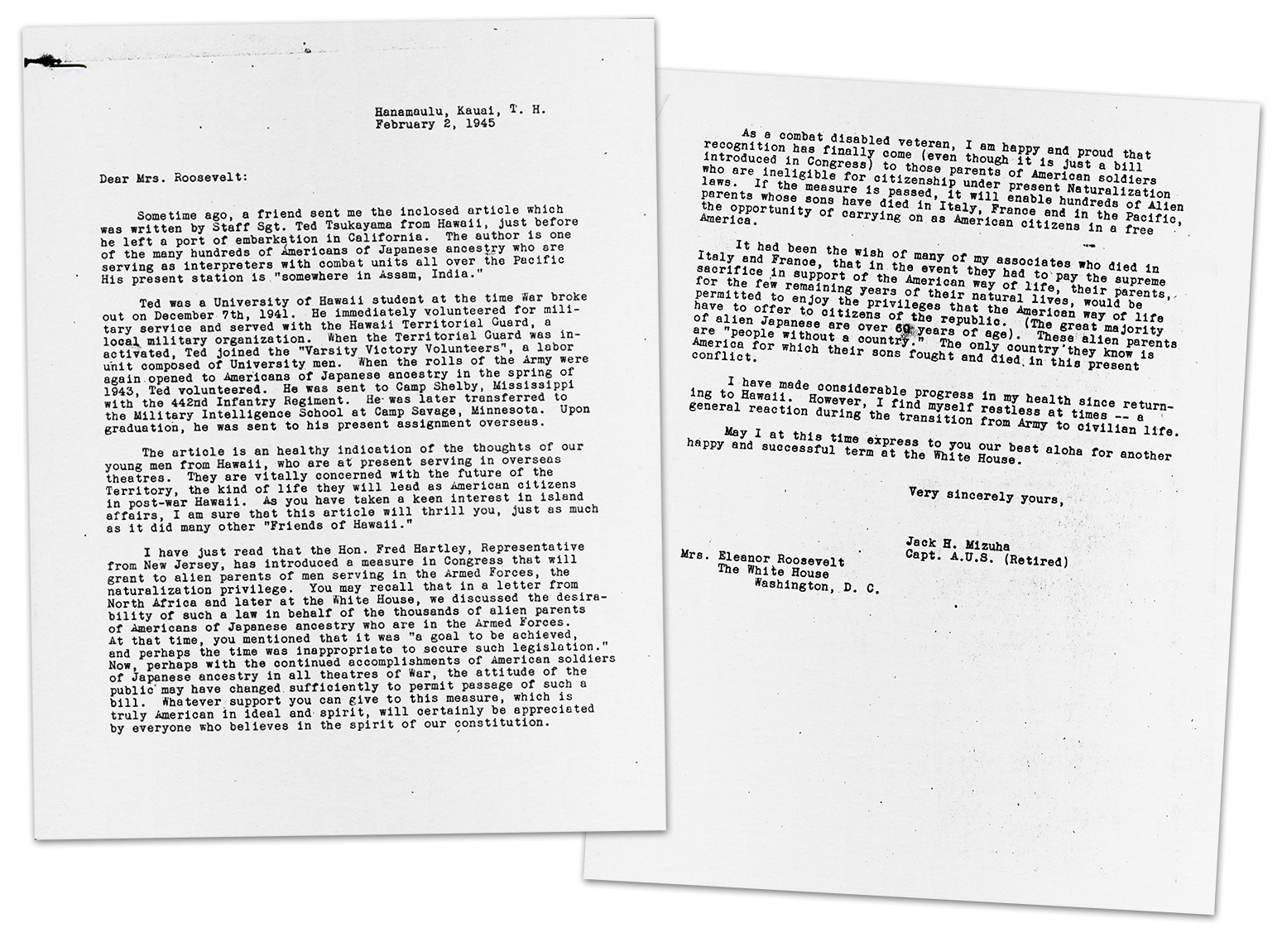
Letter to first lady Eleanor Roosevelt, February 2, 1945

Letter from First Lady Eleanor Roosevelt responding to Jack Mizuha’s letter regarding his request to support of immigrant parents of Nisei Solders
His letter writing resulted in a surprise. First Lady Eleanor Roosevelt invited him to have tea at the White House. When he returned to the US from Italy, he was able to accept the invitation.
He later wrote the First Lady for her support to allow immigrant parents of Nisei soldiers to become naturalized citizens. When she withheld her endorsement, Jack wrote again. Eleanor Roosevelt finally changed her mind and backed the effort.
Legacy of the 100th Infantry Battalion
When Japan attacked Pearl Harbor on Sunday morning, December 7, 1941, many Nisei men were already serving in the 298th and 299th Infantry Regiments of the Hawaii National Guard.
Suddenly the loyalty of these men was questioned in a debate between Honolulu and Washington, D.C. Political and military leaders in Hawaii felt the Nisei should be given a chance to prove their allegiance to America. In June 1942, the all-Nisei 100th Infantry Battalion, independent of any larger army unit, was born.
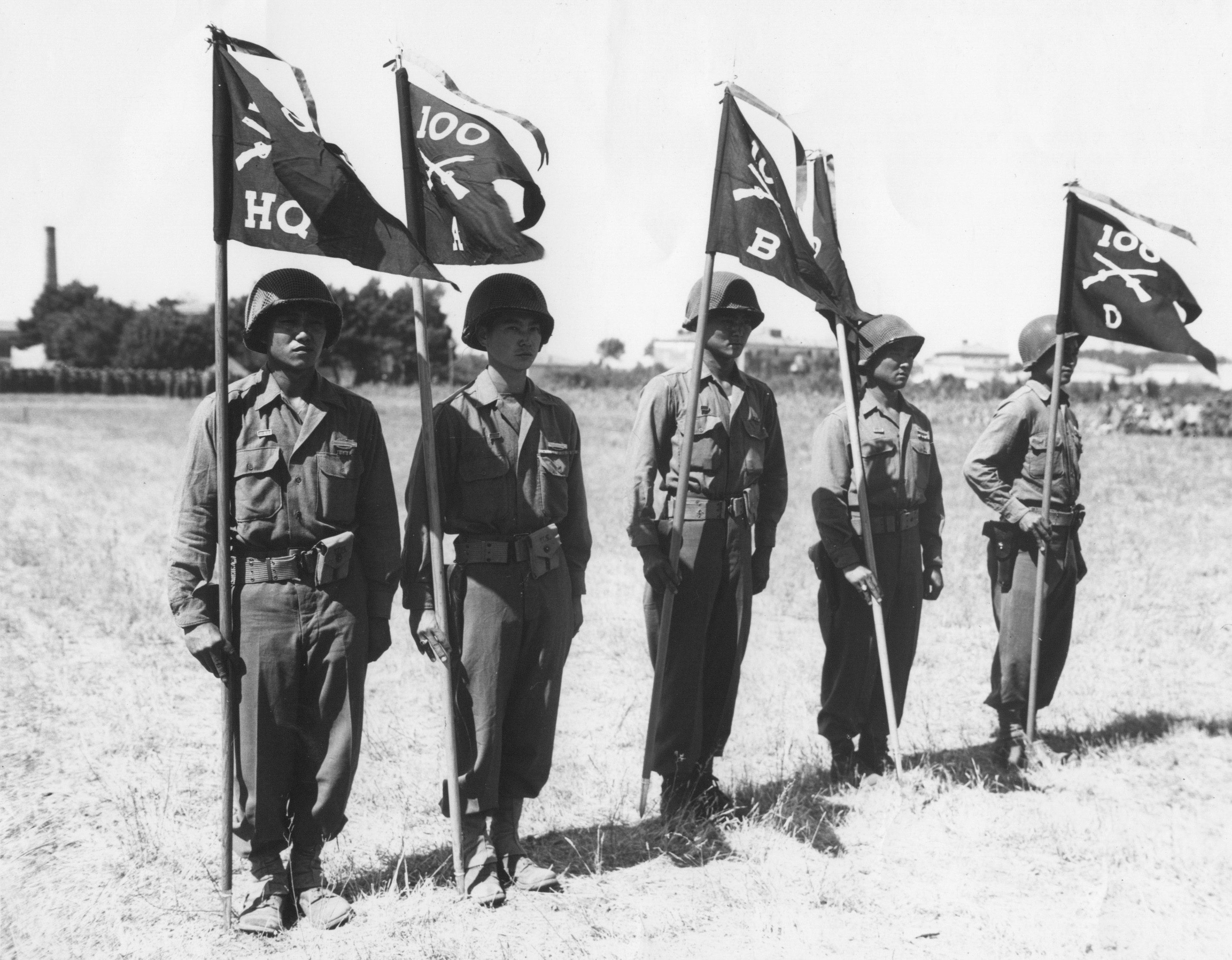
Soldiers carrying the standards of Companies A, B, C, and D of the 100th Infantry Battalion, 442nd Regiment, 34th Division, July 27, 1944
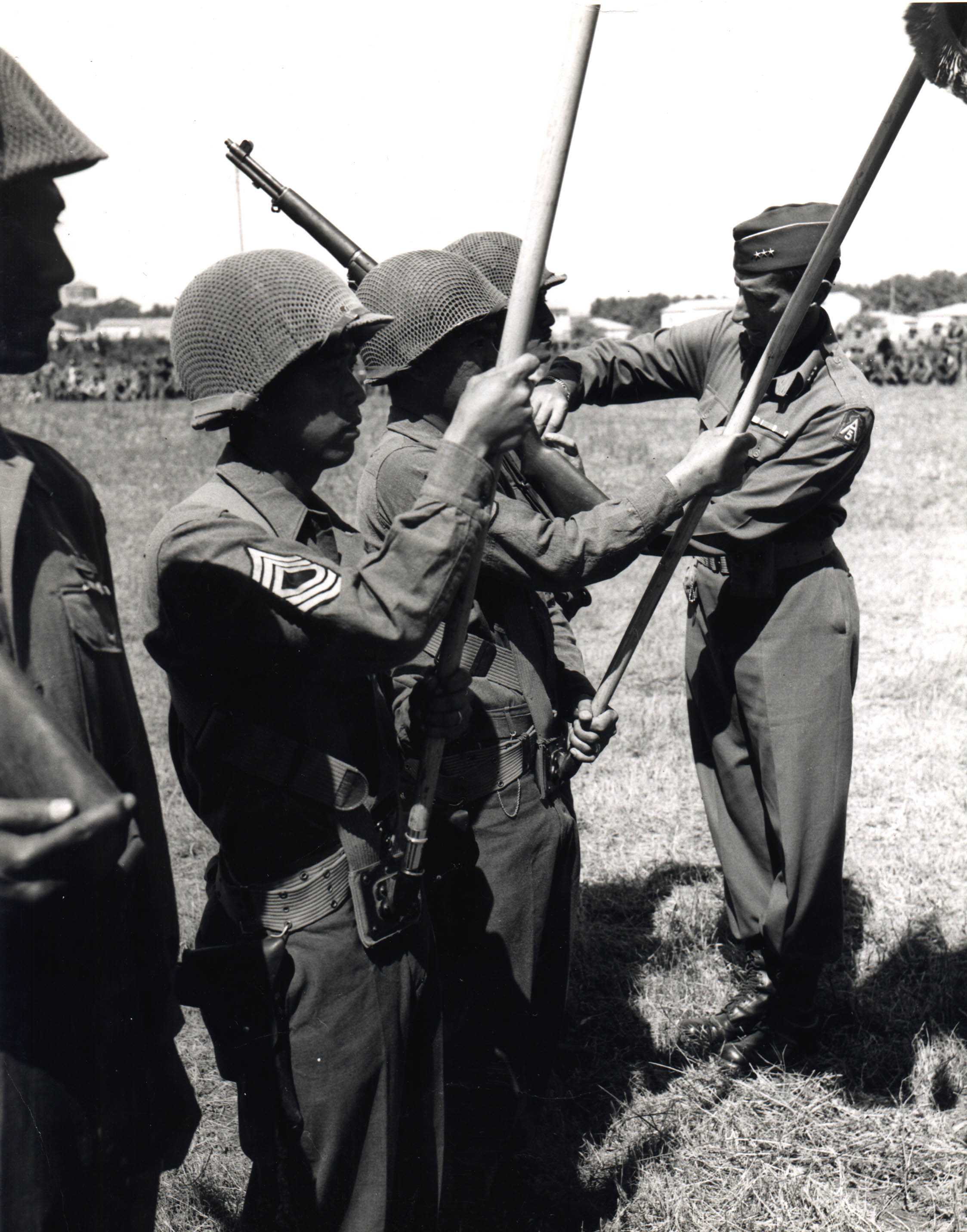
General Mark Clark pinning ribbon award to the 100th Infantry Battalion to designate the Presidential Unit Citation, July 27, 1944
The 100th was finally sent overseas to Italy in September 1943. The next nine months of fighting were fierce and debilitating. After a 40-day battle with Germans at Monte Cassino, the 100th sustained such a high rate of casualties that it became known as the “Purple Heart Battalion.”
The depleted 100th received replacements from the all-Nisei 442nd Regimental Combat Team on June 11, 1944. The 100th was then designated the first battalion of the 442nd, although it was allowed to retain its original name.
During its 18 months of combat, the 100th, or One Puka Puka (Hawaiian pidgin English for “one zero zero”), buried 342 of its men.
442nd Regimental Combat Team: Tsutomu “Tommie” Okabayashi
Tommie was a pure Texas boy. He was born in Beaumont near the Texas-Louisiana border, but grew up mostly in Houston. He tried to volunteer into the military, but was denied due to his ancestry. He even tried writing a letter to President Franklin D. Roosevelt, but it didn't help. But then he received a draft notice and enlisted in the 442nd RCT in 1943.
My father had mixed feelings when I went into the 442 Unit. But I felt it was my duty. And I hoped it would make life better for my family in Houston.|Tommie Okabayashi
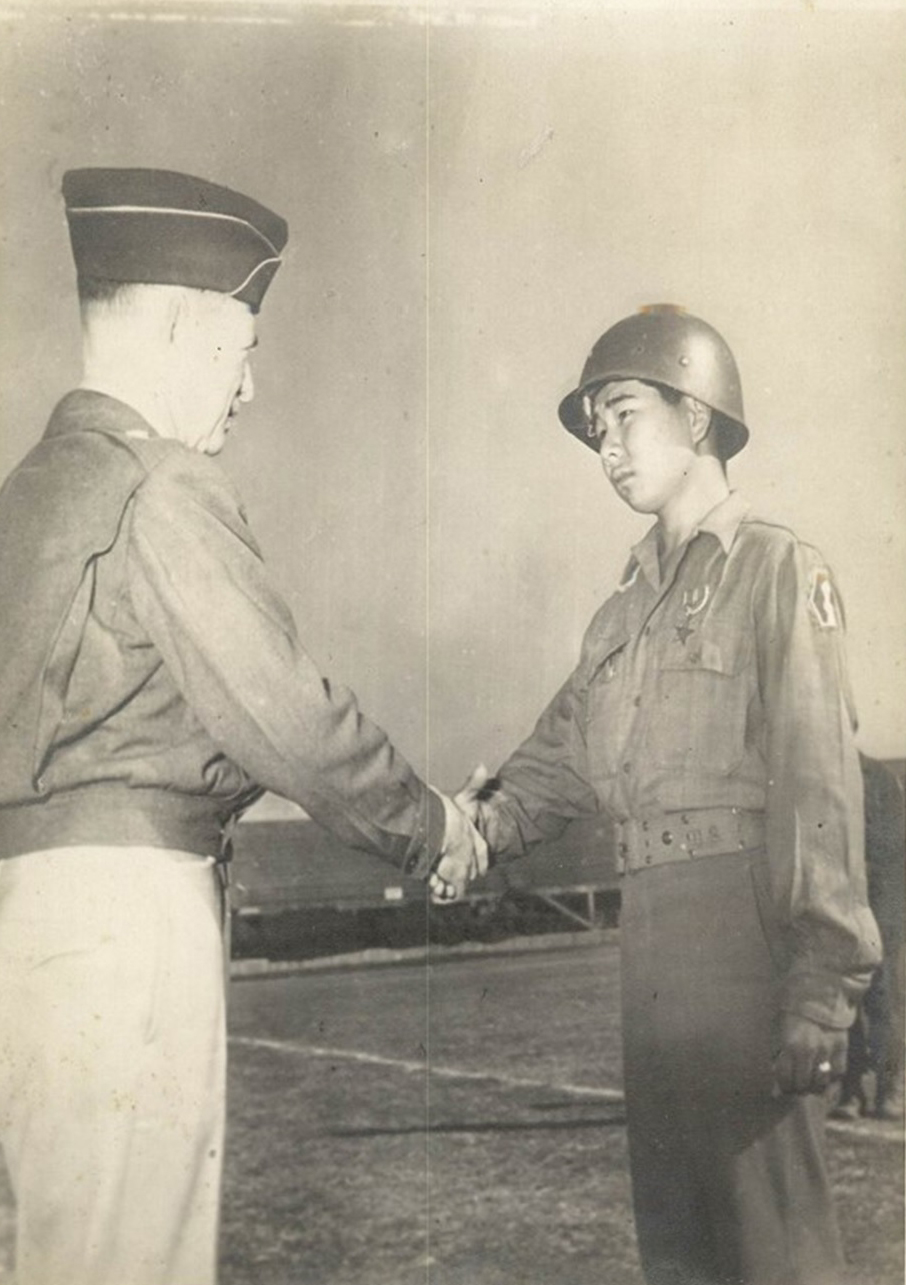
Tommie is awarded the bronze star medal for his actions in France and Italy, June 1944 through May 1945
Tommie was assigned to the Cannon Company of the 442nd, which used six 105 mm towed howitzers to provide fire support. In one instance, he assisted in the evacuation of a wounded soldier during heavy artillery fire. But Tommie, like most of the other Nisei soldiers, quietly and bravely followed through with their military duties without much fanfare. Each soldier contributed toward the success of his unit.
When the motor sergeant was wounded, Private Okabayashi, despite continued shelling, helped to carry him inside a nearby shed, and to render first aid. Then at first opportunity, he evacuated him to an aid station.|Bronze Star Citation|May 30, 1945
Legacy of the 442nd Regimental Combat Team
The 442nd Regimental Combat Team, composed of Nisei from Hawaii and mainland US, was organized on March 23, 1943.
After intense training, the team was deployed in May 1944 to Italy to join the 100th Infantry Battalion, which had been fighting for nine months.
The 442nd was assigned to General Mark Clark’s Fifth Army and underwent its baptism under fire at Suvereto, Italy, on June 26, 1944. For the next 10 weeks, the unit drove the enemy forces north to the Arno River.
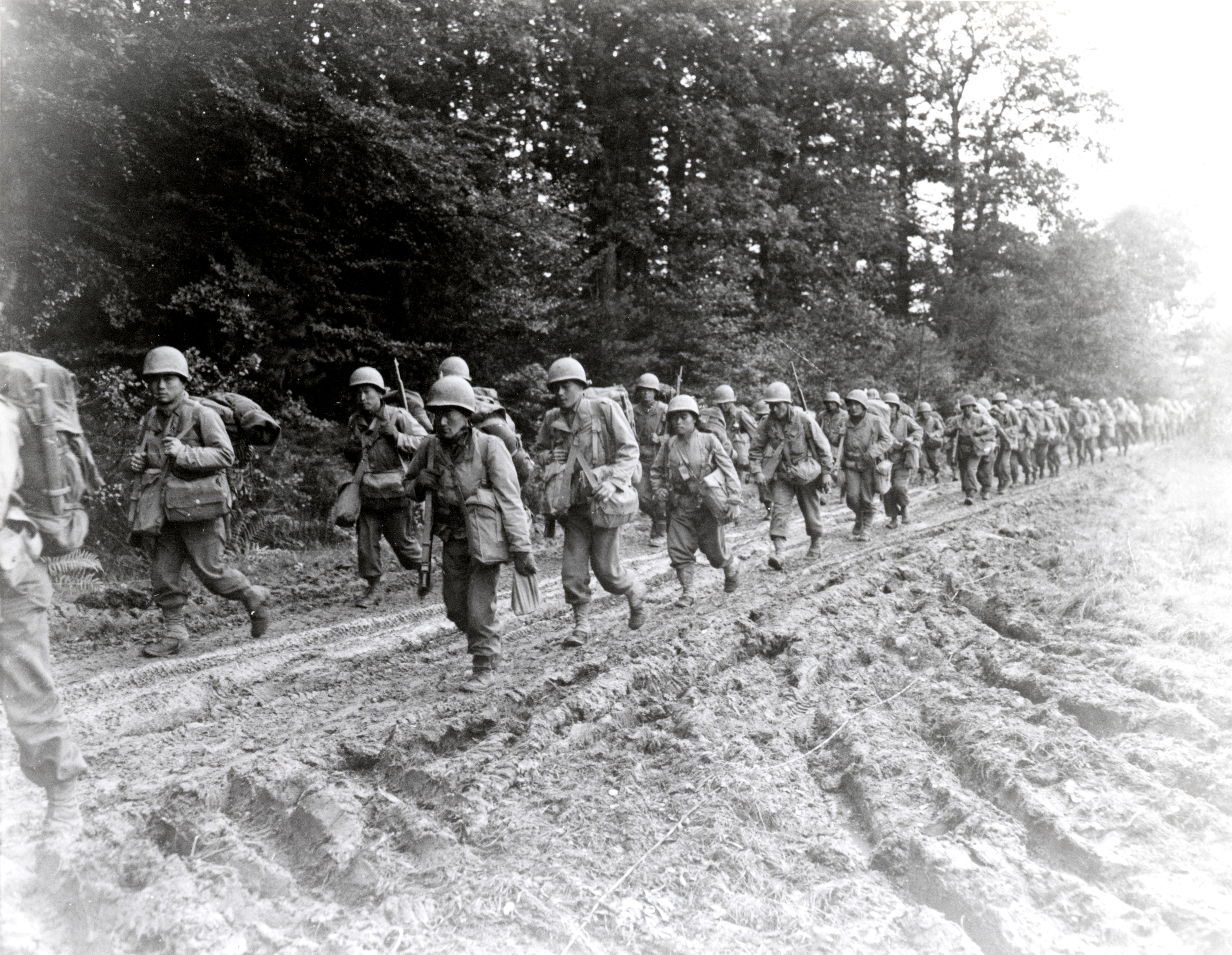
442nd soldier marching

Nisei Soldiers of the 442nd bow their heads in prayer for their departed comrades who gave their lives in combat. Cecina area, Italy, July 30, 1944.
The 442nd joined the 36th Infantry Division in the harsh Vosges Mountain campaign in France. The towns of Bruyères, Belmont, and Biffontaine were all liberated against tremendous odds.
During 34 days of nonstop combat, including the rescue of the Lost Battalion, the total casualties of the 442nd were 216 dead and more than 856 wounded.
At the request of General Clark, the 442nd returned to Italy in April 1945 to help the Fifth Army break through the German Gothic Line. The Allied forces had been blocked for six months. In less than a day, the 442nd was able to advance.
The 442nd, including the 100th Infantry Battalion, was honored with seven Presidential Unit Citations, 21 Medals of Honor, 29 Distinguished Service Crosses, 342 Silver Stars, 848 Bronze Stars, and 3,600 Purple Hearts.
The 100th/442nd RCT became the most decorated unit in US military history for its size and length of service.
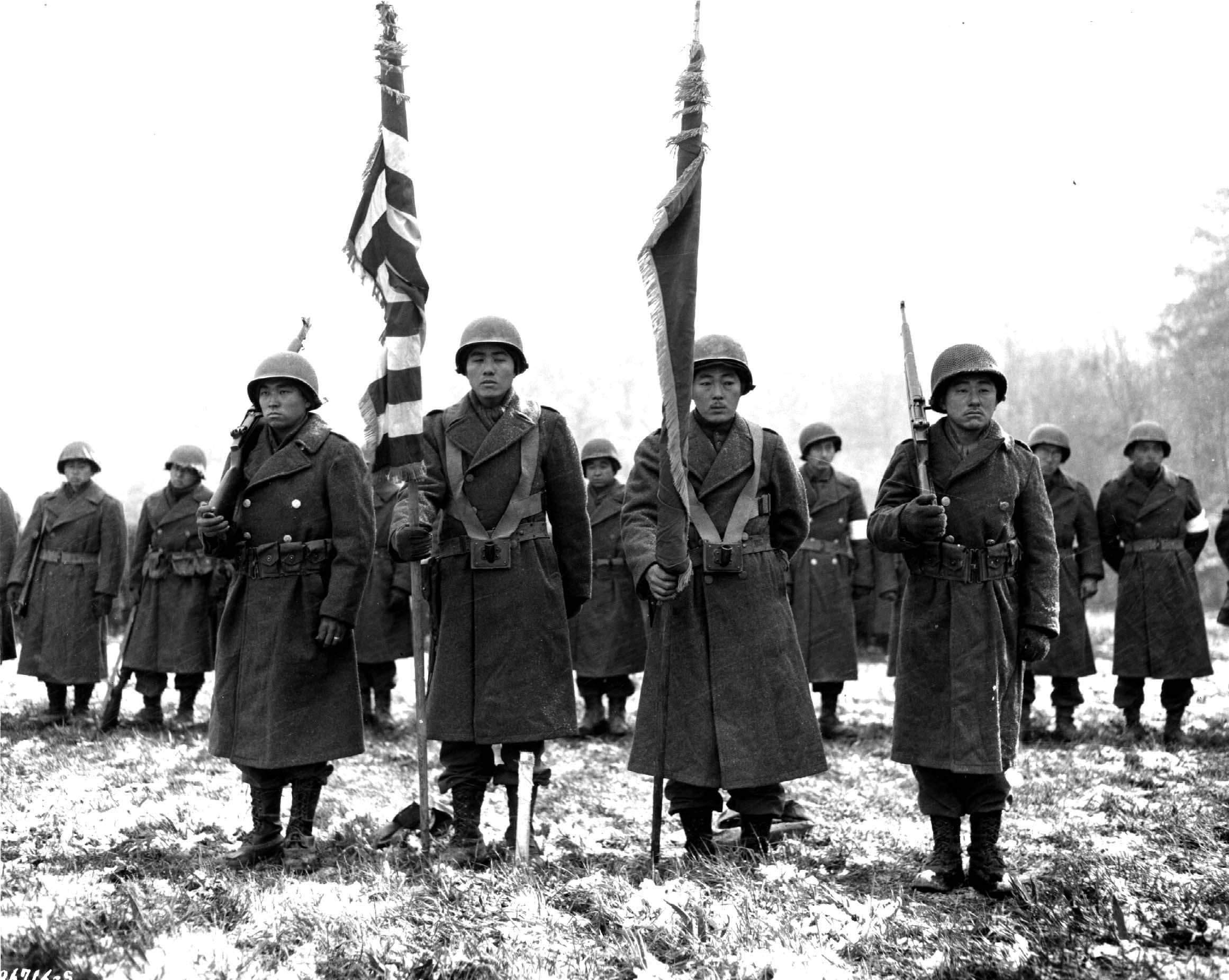
Two color guards and color bearers of the 442nd Regimental Combat Team stand at attention while their citations are read. Area of Bruyeres, France, November 12, 1944.
Resources
To learn more about Nisei soldiers, visit Resources.
Credits
Photographs courtesy of the 100th Infantry Battalion Education Center, the 1st Cavalry Division Museum, the National Japanese American Historical Society, the Okabayashi family, the Smithsonian's National Museum of American History, and the US Army Center of Military History.
